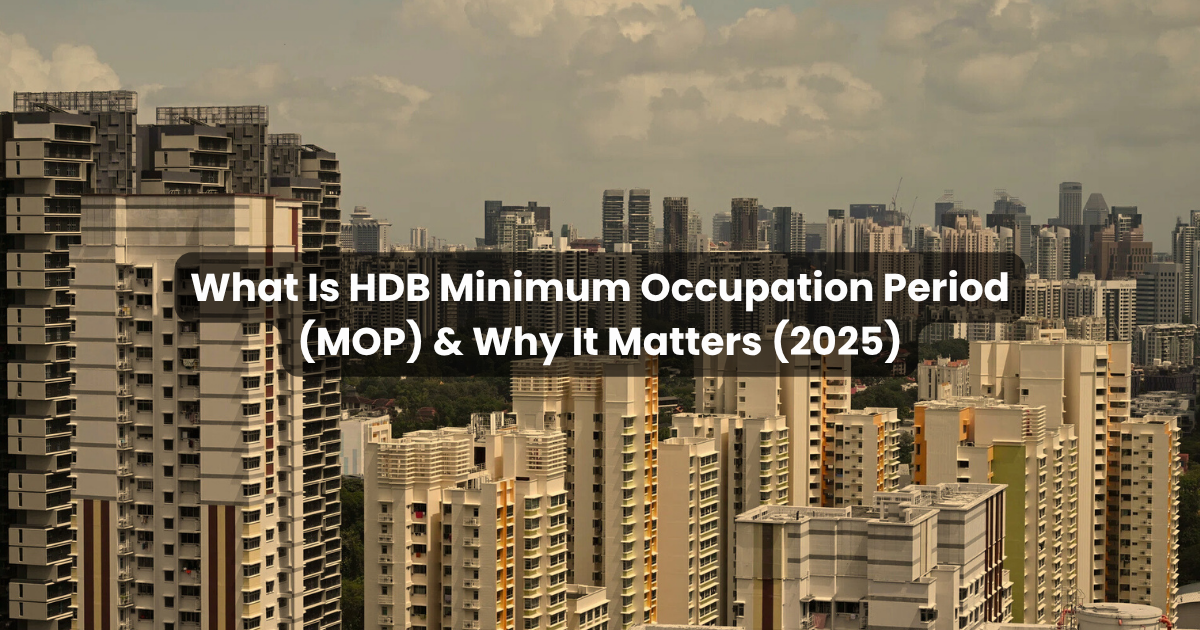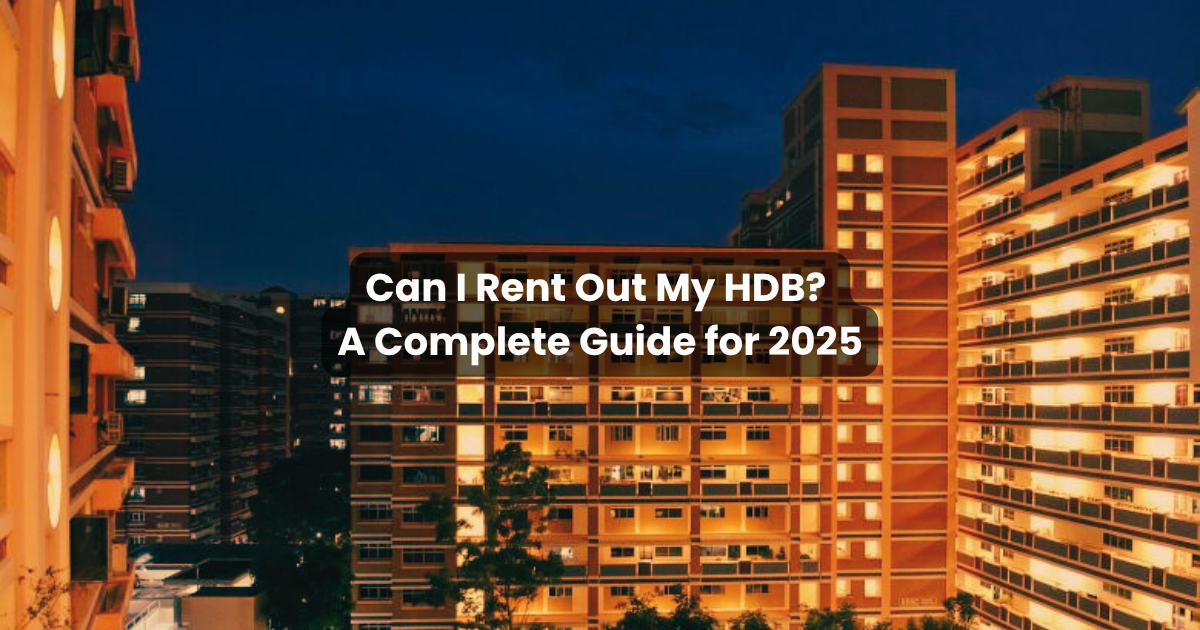- Insights & Updates
Latest News
By Chief Analyst
September 30, 2025Refinancing is one of the most common strategies homeowners in Singapore use to reduce their mortgage burden. By switching from your current loan package to another, you can take advantage of lower interest rates, more flexible terms, or features that better suit your financial situation. With interest rates fluctuating and banks frequently adjusting spreads, refinancing can result in substantial savings.
However, refinancing is not always straightforward. Beyond simply comparing interest rates, borrowers need to consider regulatory limits, lock-in clauses, penalties, and future plans such as selling or upgrading. Failing to consider these factors may result in unexpected costs that outweigh the benefits. This guide outlines the key areas you must pay attention to before making the switch.
TDSR and MSR Compliance
When refinancing, the Total Debt Servicing Ratio (TDSR) and Mortgage Servicing Ratio (MSR) rules apply, just like they do for new loan applications.
- TDSR: Caps your total monthly debt obligations (including property loans, car loans, credit card debt, etc.) at 55% of your gross monthly income.
- MSR: Applies only to HDB and Executive Condos (ECs) within the Minimum Occupation Period (MOP). It limits your housing-related monthly repayments to 30% of your gross monthly income.
(Read more about TDSR and MSR here)
This means that even if you are already servicing a loan, refinancing may be restricted if your income has fallen or if you have taken on new debts. A borrower who qualified five years ago may not automatically qualify today under stricter income checks.
Lock-In Periods
Most home loans in Singapore come with a lock-in period of two to three years. If you refinance within this period, you may face penalties, typically 1.5% of the outstanding loan amount. For a $1 million loan, that’s a hefty $15,000.
Some packages, especially floating-rate ones, may offer zero lock-in, giving you flexibility to refinance anytime. However, these packages may carry higher spreads after promotional periods.
Clawback of Subsidies
When you first took your mortgage or did your first refinancing, your bank may have offered subsidies such as:
- Legal fees subsidy (often in the range of $2,000 to $3,000)
- Valuation fee subsidy
- Fire insurance subsidy
If you refinance within three years of taking the loan, the bank may claw back these subsidies. This can add thousands to your refinancing costs, hence reducing your potential savings when you refinance.
Prepayment Penalties: IRD and RRD
In Singapore, floating rates such as SORA generally have a Rate Review Date (RRD) or an Interest Reset Date (IRD) in place. It is the scheduled point when your loan interest rate is reviewed and adjusted according to its benchmark (e.g., 1M SORA or 3M SORA).
If you choose to redeem your loan before this date, some banks impose a penalty of 1.5% on the outstanding loan amount. For example, if your loan resets every three months based on 3M SORA, and you redeem midway through the cycle, the bank may charge you for the “lost” interest up to the review date.
*Most banks do not impose such a penalty, but there are still banks which impose such a penalty.
Plans for Sale or Upgrading
Before refinancing, ask yourself: Am I planning to sell or upgrade in the next two to three years?
If the answer is yes, be cautious. Entering a new loan package with fresh lock-in and clawback periods may trap you. Selling within this period could mean:
- Paying a lock-in penalty.
- Having to return subsidies.
- Losing flexibility if you want to restructure financing for a new purchase.
For example, if you refinance today and plan to sell within 18 months, the costs of penalties may outweigh any savings.
Comparing Packages Beyond Headline Rates
When shopping for refinancing packages, do not just look at Year 1 promotional rates. Banks often quote attractive “teaser” spreads that step up in subsequent years. For example:
- Year 1: 3M SORA + 0.35%
- Year 2: 3M SORA + 0.65%
- Year 3 onwards: 3M SORA + 0.80%
While the first year looks cheap, the long-term cost may be higher. Always calculate the effective interest cost over two to three years, which is the typical holding period before most people refinance again.
For floating rate, always compare the base rate used: 1M SORA vs 3M SORA vs Fixed Deposit Home Rate (FHR). Each reacts differently to changes in the interest rate environment.
Cashflow and Affordability
Refinancing may lower your instalments today, but you must stress-test your finances. What if SORA rises another 1%? Will you still be comfortable?
If you are struggling, consider making a partial repayment with CPF or cash before refinancing. Some borrowers also extend loan tenure to reduce monthly payments, but this means paying more interest over time.
Administrative Costs and Legal Process
Even with subsidies, there are still costs associated with refinancing. Legal and valuation fees typically range from $2,000 to $3,000. The new bank may absorb these if you stay beyond the clawback period, but you must still pay upfront before being reimbursed.
Refinancing also requires fresh legal documentation and coordination between banks. The process takes approximately 2 months, as required by your current bank. Therefore, we recommend applying early if your lock-in period is expiring soon.
Conculsion
Refinancing can save homeowners tens of thousands over the life of a loan, but only if done with full awareness of the conditions. Beyond comparing rates, you must check your TDSR/MSR eligibility, lock-in periods, subsidy clawbacks, and prepayment penalties. You should also align refinancing with your property plans; selling soon or upgrading may make refinancing less worthwhile.
Ultimately, the decision to refinance should be guided not only by short-term interest savings but also by your long-term financial goals, cash flow needs, and flexibility. With careful planning and professional advice, refinancing can be a powerful tool to optimise your mortgage, but rushing in without reading the fine print can turn potential savings into costly mistakes.
Explore related content by topic
Should you clear off your Singapore home loan early? The decision depends on your finances, values, and goals. Paying with CPF incurs accrued interest that reduces future cash proceeds, while using cash carries opportunity costs. HDB owners face liquidity limits, while condo owners can access equity term loans. Balancing debt freedom with financial flexibility is key.
Yes, you can rent out your HDB flat in Singapore, but only under strict conditions. Owners must meet the Minimum Occupation Period (MOP), apply for HDB approval, and pay higher property taxes. While subletting provides steady rental income, rules, costs, and long-term goals must be weighed carefully before deciding.





